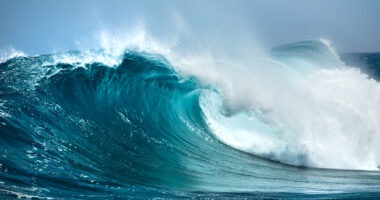Tracking Generic-Drug Approvals in the US
In 2017, the FDA approved the most generic-drug applications ever, 1,027 abbreviated new drug applications (ANDAs), breaking the previous record high set in 2016 by 214 approvals when the FDA approved 813 ANDAs. So how are generic-drug approvals faring thus far in 2018? DCAT Value Chain Insights looks at the numbers and the key approvals thus far.
Tracking generic-drug approvals
Reauthorization of the Generic Drug User Fee Amendments (GDUFA II), which provides user fees to augment FDA resources for generic-drug reviews, and the FDA’s Drug Competition Action Plan, which seeks to remove further barriers in generic-drug development and review, were two key developments in 2017 to spur generic-drug approvals, which has created both upside for increasing generic-drug approvals and downside for increasing generic-drug competition.
The US has seen a large increase in generic-drug approvals. In calendar year 2017, the FDA approved the most generic-drug applications ever, 1,027 abbreviated new drug applications (ANDAs), with 843 fully approved applications and 184 tentatively approved applications, according to information from the FDA. The number of approvals in 2017 broke the previous record high set in 2016 by 214 approvals when the FDA approved 813 ANDAs: 630 full approvals and 183 tentative approvals. The 2017 approvals included 80 “first generic” drugs, which are the first generic alternatives to a brand-name product. In 2017, the FDA updated its policy to prioritize the review of generic applications up to the third generic approval of a drug as a means to further increase drug competition.
Thus far in 2018 (January through August 2018), the FDA has approved 590 ANDAs (470 full approvals and 120 tentative approvals). Through September 11, 2018, the FDA has approved 57 first-time generic-drug approvals, which as the name implies, are the first approval by the FDA that permit a manufacturer to market a generic drug product in the US.
Some key first-time approvals were generic versions of: Amgen’s Sensipar (cinacalcet hydrochloride) for treating secondary hyperparathyroidism; AstraZeneca’s Brilinta (ticagrelor) for treating post-acute coronary syndrome management; Eli Lilly and Company’s Adcirca (tadalafil) for treating pulmonary arterial hypertension and Lilly’s Cialis (tadalafil) for treating erectile dysfunction; Gilead Sciences’ Truvada (emtricitabine and tenofovir disoproxil fumarate) for treating HIV infection and Gilead’s Viread (tenofovir disoproxil fumarate) for treating HIV; Mylan’s EpiPen Jr/EpiPen (epinephrine) injection for emergency treatment of allergic reactions, including anaphylaxis; Otsuka’s Abilify (aripiprazole) disintegrating tablets for treating schizophrenia; and Sanofi’s Aubagio (teriflunomide) for treating relapsing forms of multiple sclerosis.
Looking ahead in 2018, several other key drugs are slated to face loss of market exclusivity. These include: Pfizer’s Lyrica (pregabalin), a drug to treat nerve pain, which had 2017 sales of $5.1 billion; Roche’s Rituxan (rituximab), a drug to treat certain cancers and autoimmune diseases, which had 2017 global sales of CHF 7.3 billion ($7.8 billion); Xolair (omalizumab) from Roche and Novartis, a drug to treat asthma and chronic idiopathic urticaria in which Roche reported sales of CHF 1.74 billion ($2.00 billion), Novartis does not report US sales; Allergan’s Restasis (cyclosporine ophthalmic emulsion) for treating dry eyes, which had 2017 global sales of $1.47 billion; Johnson & Johnson’s Zytiga (iabraterone) for treating prostate cancer, which had 2017 global sales of $2.5 billion; and Bayer’s Levitra (vardenafil) for treating erectile dysfunction.







